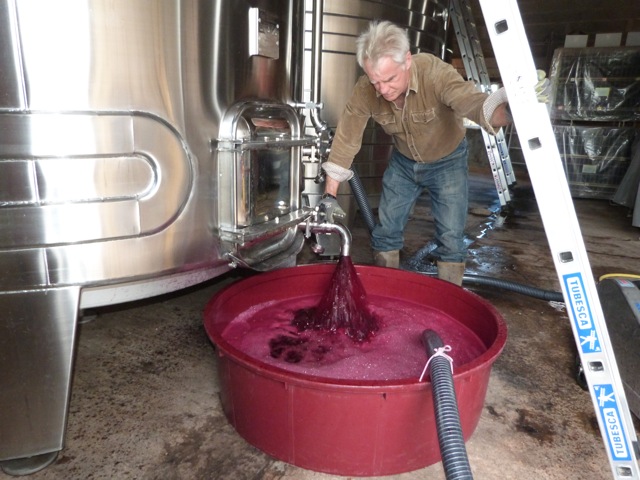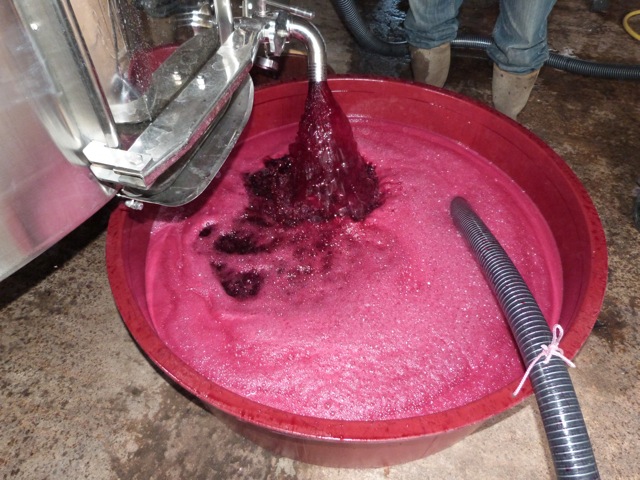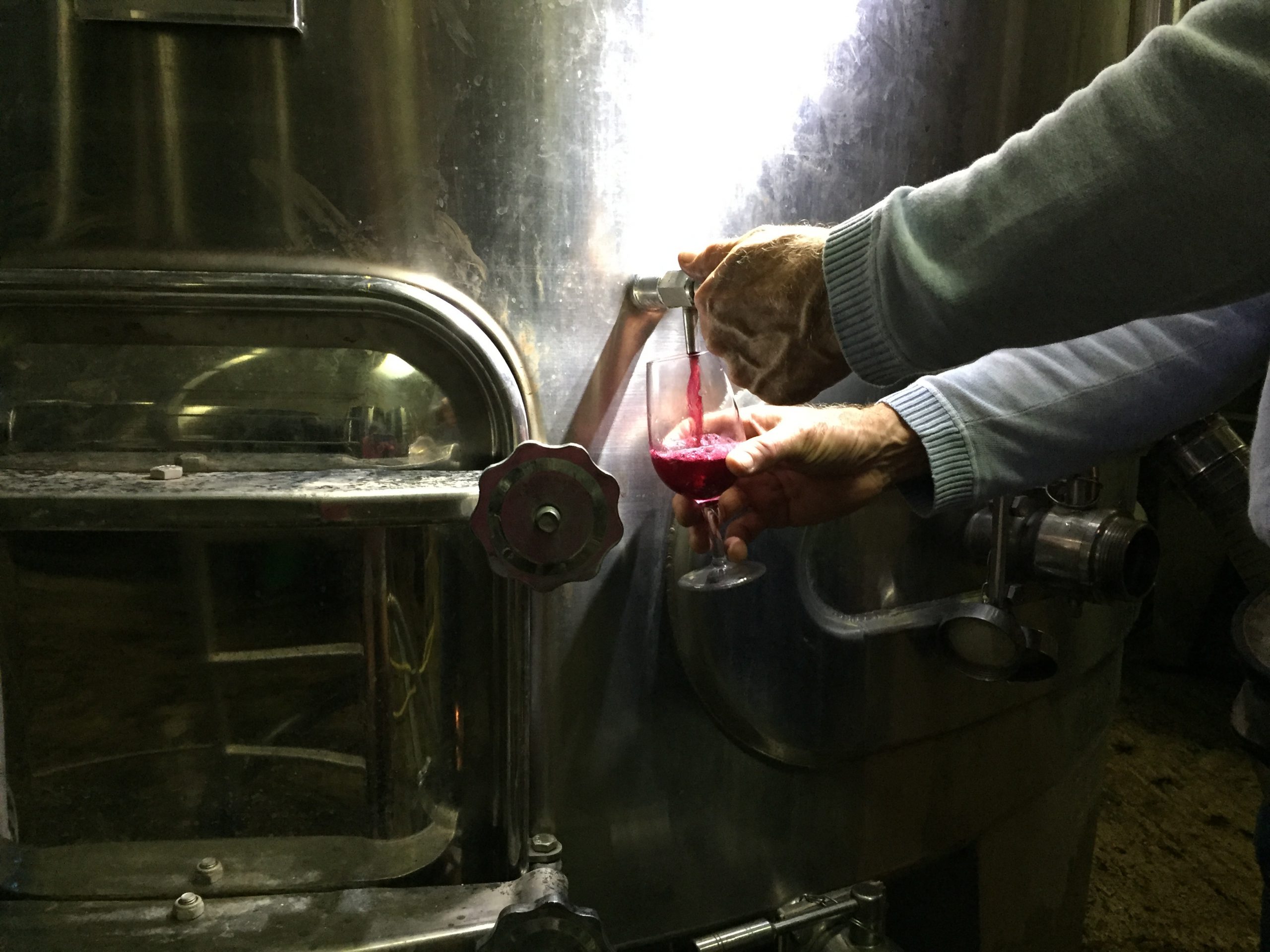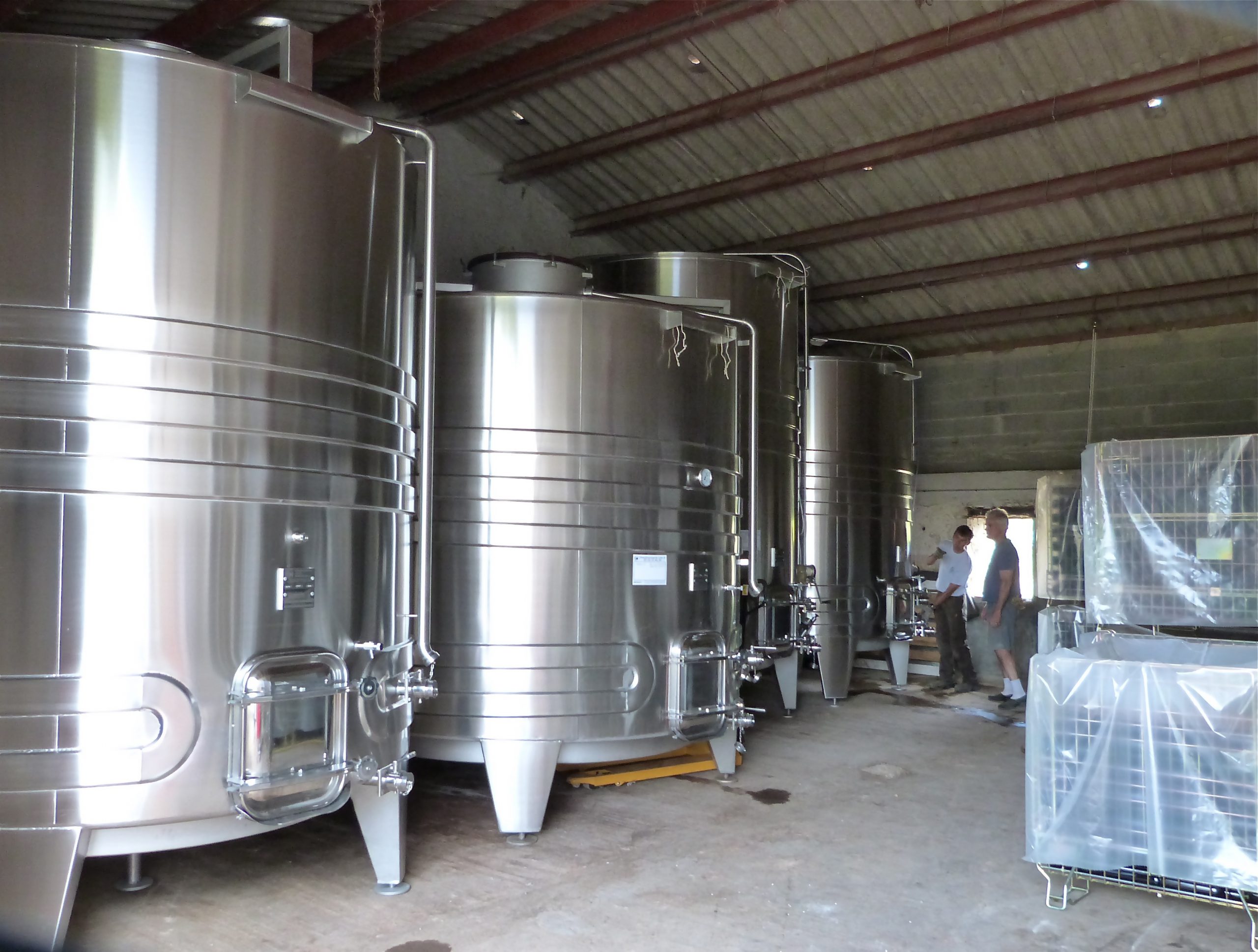 8 days into fermentation. Once again the chai has taken on that pungent aroma of fermenting grapes, reminding me vaguely of a raisin bread bakery. For the first days we kept the tanks cool to allow the grapes to macerate at a low temperature and for the fermentation to start gently.
8 days into fermentation. Once again the chai has taken on that pungent aroma of fermenting grapes, reminding me vaguely of a raisin bread bakery. For the first days we kept the tanks cool to allow the grapes to macerate at a low temperature and for the fermentation to start gently.  Our work at this stage is to carefully “move” the juice, morning and evening, to bring out the best of the fruit. The “closed pump-over” maneuver pumps the juice in a closed circuit from the bottom of the tanks up to the top.
Our work at this stage is to carefully “move” the juice, morning and evening, to bring out the best of the fruit. The “closed pump-over” maneuver pumps the juice in a closed circuit from the bottom of the tanks up to the top.
Here it enters via the “chinese hat” (chapeau chinois) – an elbow tube with a square skirt that spins – sending the juice flying around so it covers the entire pancake of berries floating at the top.
Since this pancake (le marc) contains the very flavorful skins, we want the juice to macerate up here as much as possible so the wine will absorb the complex flavors of the grapes. Our hope is that at first sip the wine will offer this full, rich taste of fruit.
One of the intriguing characteristics of good Bordeaux red wine (to which no sugar has been added of course) is a sense of round “sweetness” which doesn’t taste “sweet.” Our palate is fooled by the interaction of the myriad chemicals of the grape, which give the sensation of sweetness (and pleasure) when actually there is no sugar left in the wine after fermentation.
Another maneuver is the “aerated pumpover” (remontage aéré). The juice pours out into an open tub before being sucked up to the top again. This is one of the rare times we actually aerate the wine, only twice during the fermentation. This brief exposure to oxygen gives the yeast a boost and opens up the flavors of the juice.
Early in the process we enhanced the pumpovers with two delestage maneuvers. This involves moving the juice to their holding tanks so the marc falls to the bottom. Then we slowly pump the juice back, over the marc, again to increase the maceration. This is most time consuming, for we must clean the holding tanks carefully after each operation. John dons his thick rubber wet suit and sprays the tanks from the inside with a high power water hose. I clean the outside valves in my raincoat and shout when the water shooting from the top drenches our documents on the rickety, make-shift desk.
These documents are crucial – we chart our graphs twice a day, carefully noting the rising temperature and falling sugar density. When the density reaches 990 we’ll know all the sugar from the grapes has been absorbed and transformed into alcohol.




